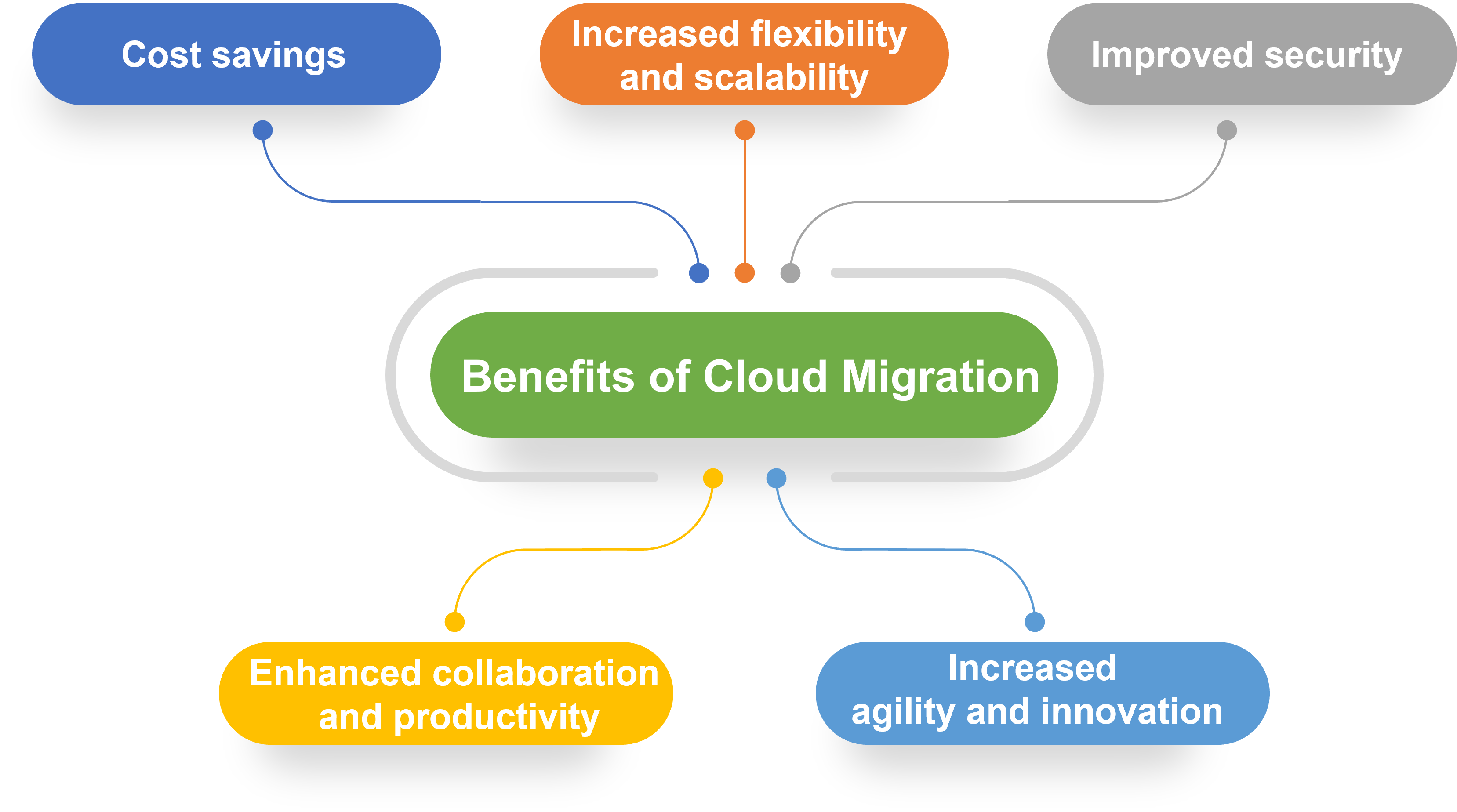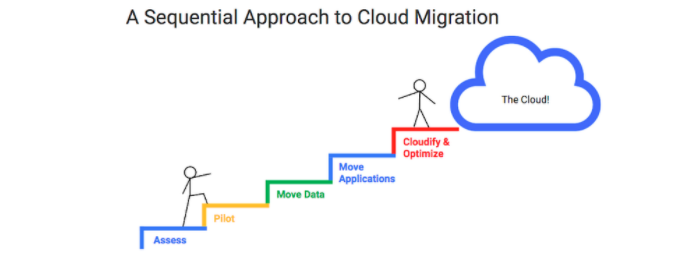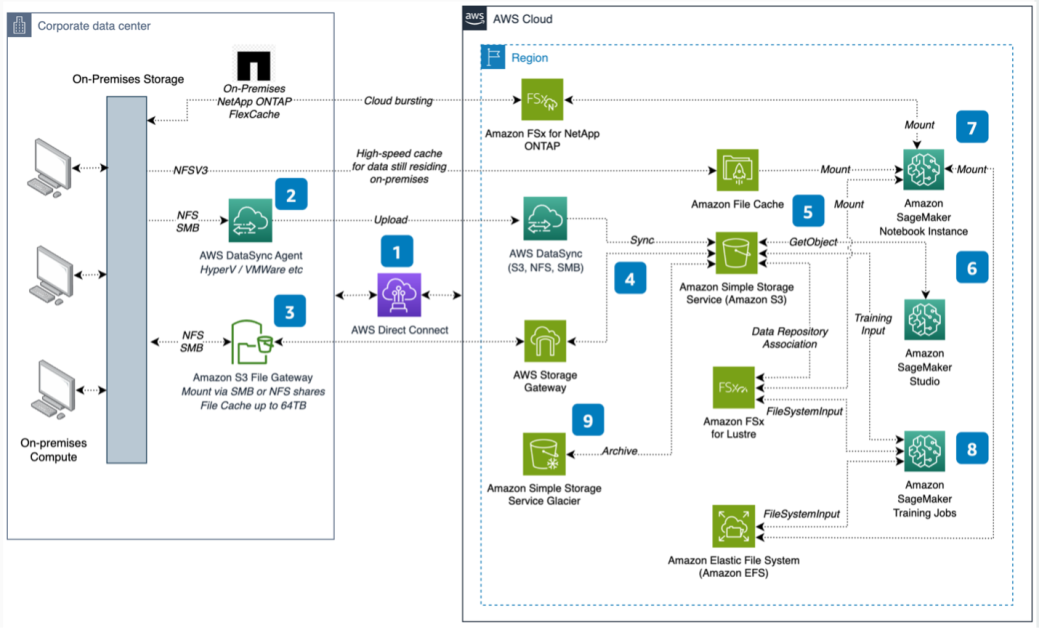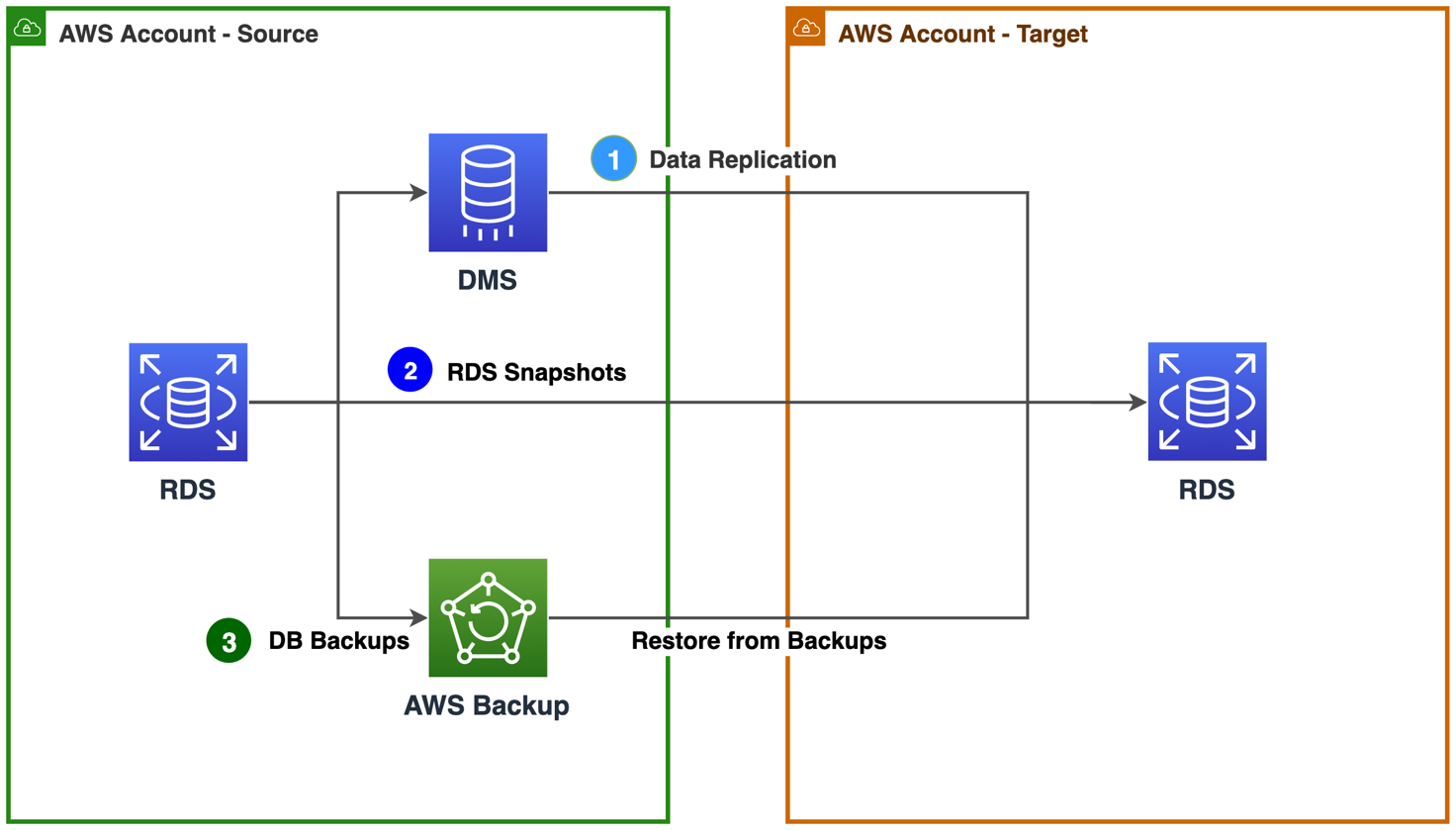What is Cloud Migration Strategy
The cloud migration approach is an overall approach that an organization uses to transfer existing on-premises or co-located workloads of applications and related data to the cloud. Migration to the cloud can be difficult and requires meticulous planning. There are many strategies companies can employ to move their software to the cloud.

Some of them are:
Rehosting is also known by the term “lift-and-shift,” this strategy involves moving the application to cloud servers without any modifications to the structure.
Replatforming The strategy entails changing the architecture of an application in order to benefit from cloud-native services and features.
Repurchasing: This strategy involves replacing an existing application with a cloud-based software-as-a-service (SaaS) application.
Refactoring This method requires re-architecting an app to make use of cloud-native capabilities and services.
The Process of Retiring: This method involves the removal of programs that are no longer required.
Staying this strategy is maintaining applications on-premises or in co-location when they are not compatible with migration to the cloud.
What Are Some Benefits of Cloud Migration?

Migration to the cloud can offer numerous benefits for businesses, for example:
Optimized costs Cloud migration can assist organizations in saving money on costs for maintenance, resources, and real estate expenses. Companies pay only for cloud-based resources they require which means they are not required to pay to maintain and purchase IT equipment that are may just use for a few minutes. In addition, cloud services have a global presence, so organizations can enhance the performance of their applications by operating workloads close to the places where their clients or users are.
Flexibility and scalability Flexibility and Scalability: Cloud migration can offer organizations the capacity to grow the IT resources they use up and down when needed. Businesses can change their resource instantly upon demand. This can aid in optimizing their workload to make them cost-effective to operate.
Enhanced security Clouds with Enhanced Security: A lot of public clouds include security functions built into them and cloud security tools that are specifically designed to make sure the resources of an organization are secure. Security patching is performed by default by cloud providers in some instances. Certain cloud providers have specific offerings designed to meet the requirements of compliance, which is perfect for highly regulated sectors like healthcare, finance as well and government.
Backup, Recovery, and Failover Cloud providers aid in improving continuity in business by giving users built-in, single-click ability to backup and recover. Certain providers offer the capability to save backups in various geographic areas.
Simple Management and Monitoring: Companies can oversee and manage their cloud and on-premise data center resources with a single interface in the event that the cloud provider offers the central administration tool.
It is important to note that although cloud migration can increase the ROI in as short as well as long term, the process in and of itself will consume time, effort, and resources. Cost estimates to plan and carry out a migration are crucial.
How Can I Move Onto the Cloud?
Moving to the cloud can be a complicated procedure that needs careful planning. Below are the steps businesses can take to move to cloud services:

Examine your existing environment before transferring to cloud computing It is crucial to analyze your existing environment in order to identify what applications and workstations are ideal for the move. It is important to should consider identifying the relationships between different applications and decide which apps are essential to your company.
Pick a cloud provider after you’ve analyzed your current environment you should select a cloud service that meets the needs of your company. The user should take into consideration factors like cost as well as performance, security, and compliance before choosing the cloud service provider.
Choose a migration plan Choose a migration strategy: There are many strategies companies can utilize to transfer their apps to the cloud. These include the following: rehosting, re-platforming, and repurchasing the application, changing its design, retirement, and keeping. Each strategy offers its own advantages as well as challenges. Organizations should be aware of which option is most suitable for their specific needs and is compatible with their business goal.
Create a roadmap for your move Once you have decided on the best migration method you should prepare your move in detail. It includes setting your goals for migration, establishing time frames, making a list of your resources as well and determining the best way you will verify the progress of your move.
Transfer your apps After you’ve mapped out the migration process and have a plan in place, you can start transferring your apps into the cloud. It involves transferring your application and data into the cloud, and checking them to make sure they work properly.
Optimize your cloud after transferring to cloud computing and establishing a cloud environment, you should improve the cloud’s environment to make sure it is compatible with your business’s requirements. This means the monitoring of your environment, the optimization of the resources you use, and making sure that your system is protected and in compliance with.
Be aware the following steps are general instructions, but the process for migrating to the cloud can be different based on your specific requirements and needs. It is essential to be aware of the goals and expectations prior to starting the process of migration.
How do I Migrate To the Cloud?

The process of moving to the cloud can be an arduous procedure that needs careful preparation.
Here are some of the steps businesses can use to make the transition towards the cloud
Review your existing environment Prior to transferring your data to cloud computing It is crucial to review the current conditions of your environment and determine what applications and workstations are ideal for moving to the cloud. The user should be aware of the dependencies between your applications, and decide which apps are crucial to your company.
Pick a cloud provider after you’ve assessed the environment you’re in and your needs, you should pick a cloud vendor that meets the needs of your company. It is important to take into consideration factors like price as well as performance, security, and security when choosing a cloud service provider.
Choose a strategy for migration It is important to note that there are many strategies companies can employ to move their software to cloud computing, such as the following: rehosting, re-platforming and repurchasing the application, changing its design, retirement, and maintaining. Each one of these options offers its own advantages and drawbacks, so organizations should be aware of which option most suits their requirements and best aligns with their company goal.
Create a roadmap for your move When you’ve decided on your migration plan You should prepare your move in detail. This involves determining the objectives of your move, establishing time frames, and making a list of the sources you require in order to determine what you will evaluate the progress of your move.
Transfer your apps After you’ve planned the migration process to the cloud, you can start transferring your apps onto the cloud. The process involves moving your software and data onto the cloud and then checking them to make sure they work properly.
To Improve your cloud infrastructure after transferring to cloud storage and establishing a cloud environment, you should enhance your cloud infrastructure in order to ensure it’s compatible with the requirements of your business. This means monitoring your environment optimizing the resources you use, and making sure that the environment is safe and secure.
Be aware the following steps are general instructions that are not the exact migration process to the cloud and can differ based on your specific requirements and demands. It is essential to understand the scope of the goals and needs prior to beginning the process of transferring.
What are the Cloud Providers?

There are many cloud-based providers in the marketplace. The most well-known cloud providers are:
Amazon Web Services (AWS): AWS is an affiliate of Amazon that offers on-demand cloud computing services and APIs to companies, individuals as well as governments.
Microsoft Azure: Microsoft Azure is a cloud computing service developed by Microsoft to build applications, test, deploy, and manage services and applications via Microsoft-managed data centers.
Google Cloud Platform (GCP): GCP is an array of cloud computing solutions offered by Google that runs with the same technology that Google utilizes internally for its own products and services for the end user.
Alibaba Cloud: Alibaba Cloud is an affiliate of Alibaba Group that provides cloud computing services for businesses as well as people.
Oracle Cloud: Oracle Cloud is a cloud computing service which is offered by Oracle Corporation that provides servers as well as storage, network applications, and more through a worldwide system comprised of Oracle Corporation-managed data centers.
IBM Cloud: IBM Cloud is a cloud computing service which is offered by IBM that offers infrastructure as a service (IaaS) and platform as a service (PaaS) as well as software as service (SaaS).
Be aware of the fact that this is not an all-inclusive list and there are several other cloud-based services available in the marketplace.
Migration of Cloud Amazon Web Services (AWS) or Any Other Services

Below are the basic steps needed to transfer Web Services (AWS):
Examine the organization’s capability to function in the cloud. Find out the expected business results and create a plan of action for implementing the. AWS gives you tools to evaluate the resources on your premises and create the right size and optimal budget for the running of software in AWS.
Mobilize and prepare your company to migrate by creating an organization, setting up an oversight structure, and creating an area of landing.
Migration and modernization Migration of your application to AWS with the help of AWS migration tools, partner organizations for migration competence, and the third-party tooling and migration ecosystem. The three-phase process of migration is intended to assist you in helping your company plan for a transition of hundreds, tens, or thousands of apps. The three phases are non-linear and never discrete in nature, so as you repeat and transfer more applications you will achieve the sameness and predictableness in the processes and procedures and you will find that the entire speed of the migration accelerates.
Operate After having transferred your application to AWS you can run them with AWS Services and Tools.
